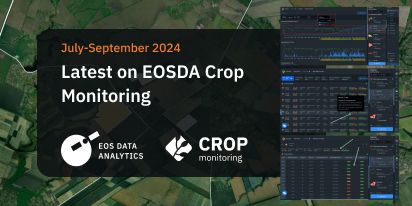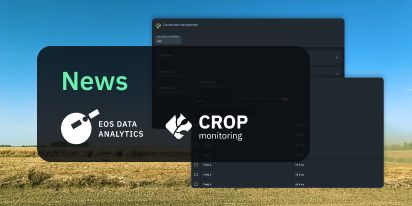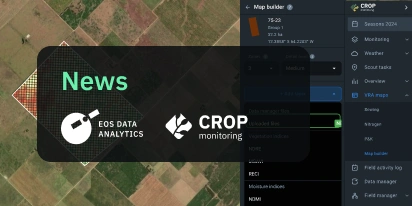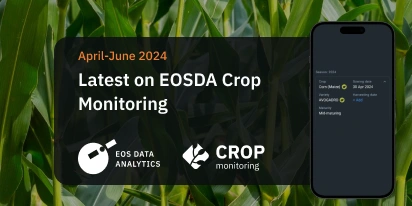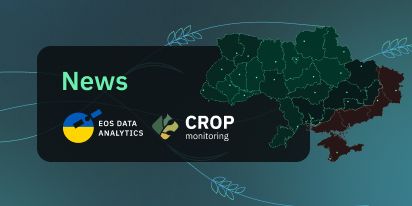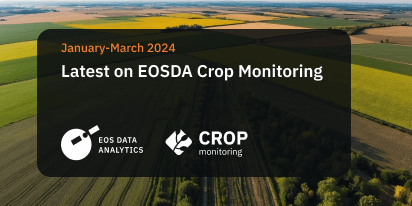How To Grow Sugarcane And Get Increased Yields
Sugarcane (Saccharum officinarum) is a perennial grass of the Saccharum genus, Poaceae family. Its cultivation began in ancient times in the South Pacific region, where there is a rotation of dry and wet seasons that is favorable for this crop. Sugarcane plant is used to produce sugar that is distinguished by its brown color and the aroma of molasses. Over 60% of the sugar produced in the world is obtained from sugarcane (the stems contain 10 – 18% sucrose).
After processing, the stems and leaves of the plant are used as livestock feed or used as fuel. Sugarcane is also grown to serve as a raw material for the production of cardboard and paper.
There are many different types of sugarcane plants, but the most well-known are chewing canes, syrup canes, and crystal canes.
Chewing canes
The varieties of this type have a fibrous and soft center, which makes it easy for chewing. The fibers of this plant stick together when you chew, so spitting it out after the sugar is depleted is easier.
Syrup canes
Although the varieties of this sugarcane type are hard to crystallize, they are perfect for making sugar syrup. That is why they are grown for both commercial purposes and personal use.
Crystal canes
These are largely commercial sugarcane varieties. Their main feature is high concentrations of sucrose, which is used for crystallized table sugar production.
The world’s leading sugarcane producing countries are Brazil and India, accounting for about 60% of the total global production of this crop. Brazil alone has produced 549 707 thousand tons of sugarcane in 2018. Other big sugarcane producers are India, Thailand, Pakistan, Mexico, Australia, Colombia, and the USA.
The United States is also the 5th largest consumer of sugar. Most of the country’s sugarcane production comes from Florida, Hawaii, Louisiana and Texas and has amounted to almost 32 million tons in 2019.
In addition to its popularity for the food industry, this crop is also gaining great importance in the biofuel industry. For example, Brazil uses half of its own sugarcane for ethanol production, and the rest goes to sugar production. Asian sugarcane producers, such as India, China, Thailand, the Philippines, and Pakistan have already set ambitious plans to use sugar cane as a biofuel for ethanol production.
Use EOSDA Crop Monitoring in your country to help manage your sugarcane field.
Sugarcane grows well in a humid warm climate, but does not tolerate an excess of ground moisture. The plants die when the temperature decreases to – 3.5 C°. The soil for goor sugarcane development should be rich in humus, but the sugar content will be lower. But although the plant develops worse on sandy soils, the sugar content in it is higher. Dense and swampy soils are not suitable for sugarcane. The best soil for this crop is a well-drained clay soil. In terms of chemical composition, the soil must contain at least 1% of lime. Besides, sugarcane tolerates soil salinity, but it causes deterioration in the quality of its juice.
The soil for growing sugarcane should be leveled-out, well supplied with irrigation water, with a low groundwater (not higher than 1 – 4.5 m). The soil should be fertile, not depleted, loose, and clean of weeds. If the soil was not cleaned, it is difficult to distinguish sugarcane seedlings from cereal weeds in spring.
Here are the main stages of the sugarcane life cycle.
1. Germination
At this stage, the planted cuttings have three or more buds. The stage lasts until two leaves appear on the stem.
2. Tillering
During this sugarcane growth stage, the first sprouts of the plant appear. Tillering can last from 4 to 8 months, depending on the plant’s variety.
3. Stem elongation
At this stage, tiller stabilization, cane formation, and elongation occur. The phase also marks rapid leaf production and the appearance of 4 to 5 internodes per month.
4. Maturation and Ripening
Maturation of the plant is determined by the sucrose level in the stems and the level of reducing sugars. By harvesting time, the stems should accumulate at least 8 – 12% of sugar.
5. Senescence
This is the last stage of the sugarcane growth cycle. The plants are fully ripe and ready for harvesting.
After harvesting the plants of the previous sowing, tractor plowing of the area is carried out to the depth of 25 – 30 cm. On contaminated soils, two fall plowings are carried out. The first is to the depth of 15 – 18 cm, and the second – of 25 – 30 cm. Fertilizers are applied before the second plowing.
There should be a break of at least one month between the first and second plowing. After each plowing, the weeds are carefully removed. Winter plowing, in addition to loosening the soil and cleaning it from the weeds, also contributes to the accumulation of moisture in the soil and the fight against pests and plant diseases. To additionally accumulate moisture in the soil, one winter watering can also be added to the land preparation process in December or January.
In spring, when the soil dries out, spring plowing is carried out to the depth of 20 – 25 cm, followed by harrowing and weed control. For soft and loose soils, one spring plowing is enough.
In tropical countries, sugarcane planting dates most often depend on the rainy season. The most optimal planting time in non-irrigated areas is spring (before the rains start) or autumn (when the rains stop).
Planting cuttings should be completed before April 1 and no later than April 10. At the end of planting, post-planting watering is carried out to prevent erosion of the soil.
The best crop rotation for sugarcane would look like this: 3 years of alfalfa, 2 – 3 years of sugarcane, alfalfa again. In areas contaminated with weeds, it may be necessary to include black fallow in the crop rotation.
Use EOSDA Crop Monitoring to help in deciding when your field is ready for planting sugarcane.
The material for planting sugarcane is harvested in the fall. The best, most ripe plants of sugarcane are selected. Sugarcane intended for planting is harvested in late October or early November. It is very important that it is not exposed to frost below 4°C.
After sorting and cleaning of leaves, sugarcane stalks are stored strictly according to varieties. Trenches for storing planting material are made 1.5 – 2 m deep, 2 m wide, and of the appropriate length, depending on the amount of stored material.
In spring, the stems are dug up and sorted again. Only the best, healthiest planting material is left for sugarcane planting. The cuttings are laid out in the soil in 1 or 2 rows. The depth of planting is up to 25 – 30 cm and is determined by the type of soil. For loose soils with good drainage, it is advisable to plant to the depth of 25 – 40 cm. When cultivating sugarcane without irrigation or with sprinkler irrigation, the planting depth should be 15 – 30 cm.
The seed rate is from 2.5 to 10 t / ha or from 25 to 50 thousand cuttings with 3 buds. Planting depth and cover layer thickness are important.
Easily identify field productivity zones in EOSDA Crop Monitoring to distribute seeds across the field rationally.
Sugarcane fertilizer requirements are more complex compared to other crops due to its long life cycle.
The plants respond well to the application of nitrogen fertilizers, which results in a significant increase in yield. The need for nitrogen fertilizers varies depending on the potential yield of sugarcane and on the nitrogen reserves in the soil. Sugarcane is capable of absorbing mineralized nitrogen from the soil, the rate of which can range from 50 to 150 kg / ha. Approximately, 1 kg of nitrogen fertilizer should be applied per ton of expected yield.
Phosphate sugarcane fertilizers stimulate plant growth in the early stages, so they must be applied correctly when planting. The crop benefits from the initial application of phosphate fertilizer immediately after the previous harvest. For soils with an average phosphorus supply, it is often recommended to plant 100 – 120 kg / ha of P2O5 and 200 kg / ha for soils that lack phosphorus. To obtain a good yield, 60 kg / ha is usually sufficient.
Fertilizing sugarcane with potassium leads to an increase in yields and sugar content. Typically, potassium application rates are in the range from 80 to 200 kg / ha per year, but much more can be used on irrigated land and for high-yielding varieties.
Use EOSDA Crop Monitoring to identify field productivity zones and apply fertilizers across the field rationally.
The first sugarcane irrigation is carried out after planting the cuttings. By the time the cane ripens, the irrigation rates are reduced, and the irrigation periods are increased. During the growing season, an average of 8 to 15 waterings are provided. Irrigation periods in the absence of rain are 15-20 days, and irrigation rates are 500-870 mm.
Optimal moisture conditions are created when soil moisture during tillering and intensive cane growth is at least 70 – 80%. And 3 months before harvesting, the soil moisture should be no higher than 70% of the full moisture. The number of waterings for sugarcane in different climatic zones varies from 1 to 30. The irrigation rate is up to 1000 m3 / ha on loamy soils and 750 m3 / ha on sandy soils. Sprinkler irrigation is carried out on uneven areas and with limited water supplies. Watering is stopped 1.5 months before harvesting.
Here are the most common sugarcane pests and the ways to protect the crop from them:
Sugarcane weevil borer
The larvae of this pest feed on the internodes of the stalk and fill it with frass.
Exotic borers
The larvae of this pest create tunnels in the stem of a plant. Small holes appear on infested stalks. The pest damages the growing point and causes the death of young plants.
Sugarcane planthoppers
This is brown-coloured leafhopper. Copious excretion of honeydew may result in the development of sooty mould on plants.
Sugarcane pyrilla
This sugarcane pest causes yellow spots on the leaves of a plant, especially around the midrib on the underside of the leaf.
Sugarcane pests management
Here are the most common and effective practices to protect the crop from these pests:
- Residues management
- Control of stalk damage and lodging
- Selection of resistant varieties
- Insecticides application
Use EOSDA Crop Monitoring to manage crops health and provide treatment when needed.
Here is the list of most common sugarcane diseases and the ways to protect the crop from them:
Eye spot
This disease causes the appearance of small, elongated, water-soaked spots on leaves. These later develop into straw colored lesions with reddish brown center. The disease emerges in high humidity and low night temperatures, especially on leaves that are wet from rainfall or irrigation.
Protection measures:
- Application of foliar fungicides
Pineapple disease
This sugarcane disease is manifested in leaves yellowing. The stem has a strong smell of pineapple.
Protection measures:
- Selection of resistant varieties
- Planting in dry, well-draining soils
Red rot
The leaves of a plant infected with this disease become yellow and dry. Elongated red lesions may appear on leaf midribs.
Protection measures:
- Selection of resistant varieties
- Removement of crop debris from the field
- Seed treatment with hot water
Sugarcane smut disease
This disease causes the stems to thin and develop narrow, erect leaves. Later, black whip-like structure emerges from the terminal bud.
Protection measures:
- Selection of resistant varieties
- Seed treatment with hot water
Sugarcane mosaic virus
This sugarcane disease causes light-green striations on young plants leaves.
The plants become stunted and eventually die.
Protection measures:
- Selection of resistant varieties
- Planting disease-free seed cane
- Using clean machinery
- Feral animal control
Use EOSDA Crop Monitoring to manage crops health and take measures when needed.
Sugarcane intended as planting material for the next year is harvested first. And sugarcane that is meant for further processing is harvested later. Harvesting sugarcane that will be used as planting material starts on October 20th – 30th, before the first autumn frosts. Sugarcane that will be processed is harvested at the beginning of November and can continue throughout November and even later.
Manual sugarcane harvesting process involves cutting off the stem, removing its top and leaves, and dividing it into parts. The stems should be left without leaves after that, since it increases the purity of the juice during processing.
However, manual harvesting is not the most efficient one. That is why it’s better to use sugarcane harvesters. The success of using harvesters depends on the leveling of the soil and on the amount of dry leaves falling. For better harvesting with a harvesting machine, the leaves are pre-burned, but this is possible only on industrial sugarcane fields.
The average sugarcane yield in 2020 is 60 – 70 tons per hectare. However, this amount varies between 30 to 180 tonnes per hectare, depending mostly on crop management used in cultivation and the properties of a sugarcane variety that is planted.
The highest sugarcane yield per acre was harvested by a farmer in TN Palayam in Erode district and amounted to 98.3 tons with the average sugarcane cane yield in the district being 45 – 50 tons per acre.
Sugarcane prices depend on its demand, the volume of its production, the economic state of the producing country, the state of the global market, and the yield of the crop in a particular year. That is why sugarcane prices per ton can vary from $30 to $60. In the U.S., the lowest sugarcane price was $9.41 per ton in 2014, and the highest was $60.7 per ton in 2011.
High yields of sugarcane are reached only if the farmers follow all stages of its cultivation technology. The crop is sensitive to climate, soil type, irrigation, fertilizers application, pests and diseases control, varieties, and harvesting season. Here are the main points to pay attention to:
1. Place in crop rotation. The best predecessor for sugarcane is alfalfa. But if the field is contaminated with weeds, it is better to include black fallow in crop rotation.
2. Soil cultivation technology. Pay attention to the moisture and nutrients content in the soil. Make sure the soil is weeds-free and has undergone the necessary cultivation before planting sugarcane.
3. Choice of the planted variety. Choose only the varieties that have shown high yields and that are the most resistant to pests and diseases.
4. Seeding depth and sowing time. Take into account the climate in the area where you grow sugarcane, the temperature, moisture, and leveling of the soil.
5. Pests and diseases control. Check the plants’ health through its development to react to any issues in a timely manner, ensuring no yields losses.
6. Fertilization. Provide the crop with all the needed nutrients in different development stages to ensure better plants’ growth and higher yields.
Use EOSDA Crop Monitoring to help manage your sugarcane field remotely for receiving high yields.
